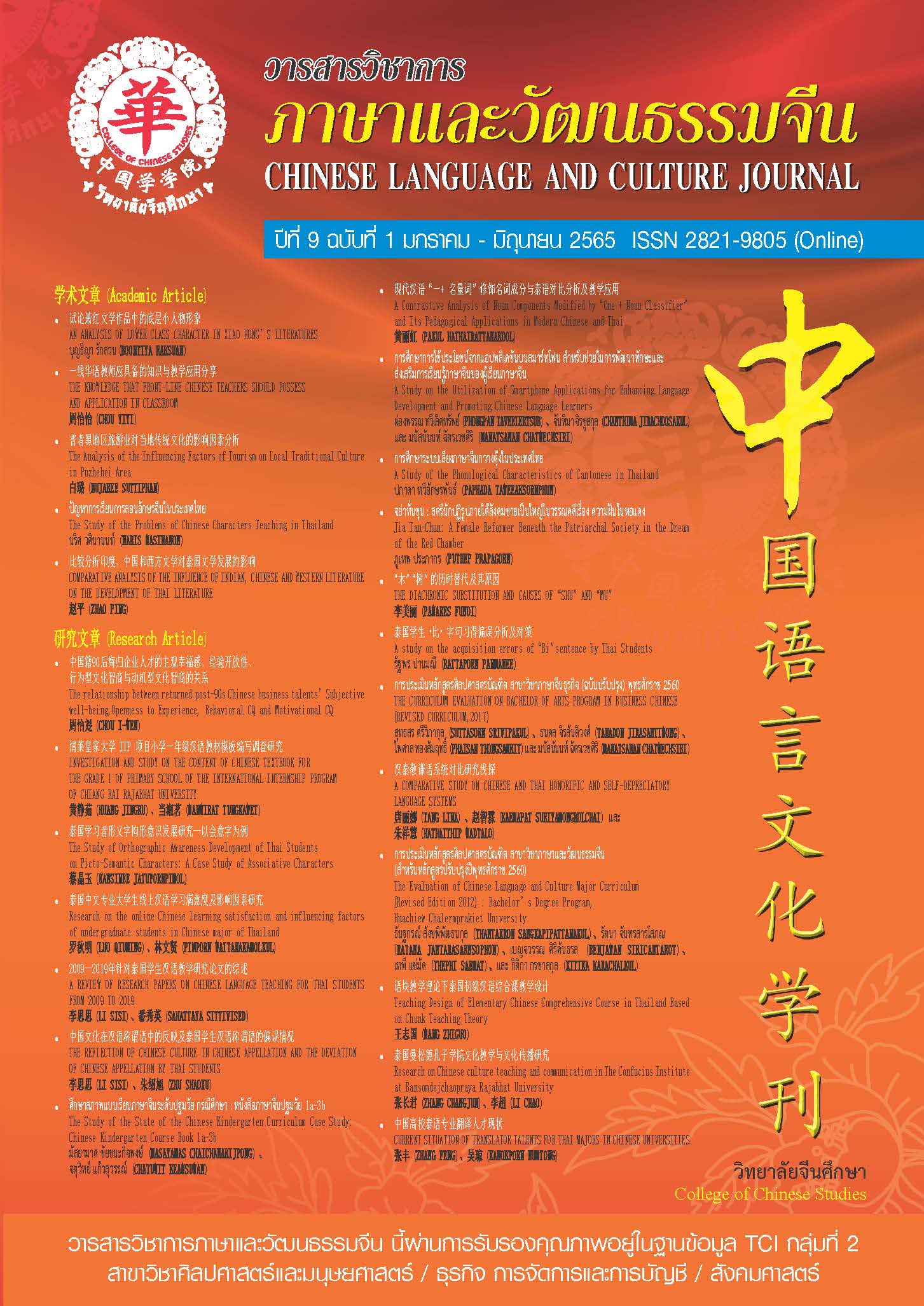汉泰敬谦语系统对比研究浅探
A COMPARATIVE STUDY ON CHINESE AND THAI HONORIFIC AND SELF-DEPRECIATORY LANGUAGE SYSTEMS
Keywords:
honorific and self-depreciatory language, culture, pragmatic principle, dynamic contextAbstract
ABSTRACT
Both China and Thailand are etiquette-oriented countries with a fine tradition of courtesy. Since the joint construction of “The Belt and Road” East Asian route, the two sides have enjoyed mutual benefit and connectivity. Friendly exchanges between the two peoples have increased. Honorific and Self-depreciatory expressions have been frequently used. Being familiar with the honorific and self-depreciatory language systems of Chinese and Thai and the details of the differences between them can effectively facilitate cross-cultural communication. The pragmatic principles of the system are basically the same, and the appropriate honorifics are selected according to dynamic contexts. However, due to different political, historical and cultural backgrounds of the two sides, the social hierarchy of Thailand is clear, and there are obvious differences between Chinese and Thai honorific and self-depreciatory language systems, mainly reflected in the two aspects of macrocosm and microcosm. The macroscopic difference includes the constructive way and the classification standard, the microscopic difference locks the concrete category—Appellation honorific and self-depreciatory language, modal particles and auxiliary verbs, verbal honorific and self-depreciatory language. Different from Chinese, modal particles and auxiliary verbs are typical special categories in Thai honorific and self-depreciatory language system, in which the former, the status modal particle is mainly used to perform the function of respect and modesty, which is placed at the end of the sentence and is different between males and females.
Key words: The Belt and Road, honorific and self-depreciatory language, dynamic context, culture
References
参考文献
Bright, W. Social Factures in Language Change[A]. In Coulmas F. (ed.). The Handbook of Sociolinguistics[C]. 北京:外语教学与研究出版社,2001.
Rapuepon Supranee(冉冉). 《汉泰敬词对比研究》 [D]. 华东师范大学,2015.
顾曰国. 《礼貌·语用与文化》[J]. 外语教学与研究,1992(4):10-17.
傅继华,文映宇. 《汉英文化差异二则:隐私与敬语谦词》[J]. 四川师范学院学报(哲学社会科学版),2002(1):83-87.
洪成玉. 《谦词敬词婉词词典》[Z]. 北京:商务印书馆,2010.
刘宏丽. 《明清敬谦语研究》[D]. 山东大学,2009.
潘攀. 《论亲属称谓语的泛化》[J]. 语言文字应用,1998(2):36-40.
王雅军. 《社交语应用词典》[Z]. 上海:上海辞书出版社,2011.
曾小燕. 《汉日敬语对比研究》[D]. 河南大学,2013.
Downloads
Published
How to Cite
Issue
Section
License
Copyright (c) 2022 Journal of Chinese Language and Culture, Huachiew Chalermprakiet University

This work is licensed under a Creative Commons Attribution-NonCommercial-NoDerivatives 4.0 International License.
บทความที่ได้รับการตีพิมพ์เป็นลิขสิทธิ์ของวารสารภาษาและวัฒนธรรมจีน มหาวิทยาลัยหัวเฉียวเฉลิมพระเกียรติ
บทความใน “วารสารวิชาการภาษาและวัฒนธรรมจีน” เป็นทรรศนะของผู้เขียนโดยเฉพาะ กองบรรณาธิการไม่มีส่วนในความคิดเห็นในข้อเขียนเหล่านั้น




